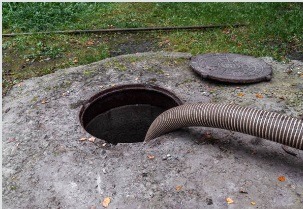Septic system failures are more common than you may think, with an estimated 23,000-75,000 cases each year in the United States alone.
Imagine waking up one morning to find that your septic tank has failed, and you’re now dealing with raw sewage spilling into your yard. Not only is this a disgusting and unpleasant situation, but it can also pose serious health risks.
Fortunately, many of these accidents can be prevented through proper septic tank maintenance. This blog post will discuss five common septic tank maintenance mistakes homeowners make when maintaining their septic systems, and provide tips on how to avoid them. Read on to learn more.
Mistake 1: Not Pumping the Tank Regularly
One of the most common septic tank maintenance mistakes is not pumping the tank regularly. Over time, solid waste builds up in the tank, reducing its capacity and increasing the risk of clogs and backups.
Experts recommend septic tank pumping every 3-5 years, depending on the size of the tank and the number of occupants in the house.
Solution
Set a reminder to pump your septic tank regularly. Keep a record of the last time the tank was pumped and have a septic maintenance routine planned. If you’re unsure of when to pump your septic tank, consult a professional.
Mistake 2: Flushing Inappropriate Materials Down the Drain
Flushing inappropriate materials down the drain is a major cause of septic tank problems. These materials include cooking oil, grease, diapers, feminine hygiene products, paper towels, and chemicals. They don’t break down easily and can clog the system, leading to backups and damage to the tank.
Solution
Be mindful of what you flush down the drain. Dispose of cooking oil and grease in a separate container and throw them in the trash.
Only flush toilet paper and human waste down the toilet. Avoid using harsh chemicals when cleaning septic tanks.
Mistake 3: Neglecting the Drain Field
The drain field is the area where wastewater from the septic tank is distributed and filtered through the soil. Neglecting the drain field can cause clogs and backups, and can also lead to environmental damage. This can lead to high septic maintenance costs.
Solution
Avoid parking cars, trucks, or heavy machinery on the drain field. Do not plant trees or other deep-rooted plants near the drain field, as their roots can damage the system.
Do not cover the drain field with impermeable materials such as concrete or asphalt.
Mistake 4: Overloading the System
Overloading the septic system is a common mistake that can lead to clogs and backups. This can happen when there are too many people living in the house, or when excessive water is used, such as when doing laundry or taking long showers.
Solution
Be mindful of how much water is being used in the house. Repair any leaks or drips to reduce water usage.
Consider installing low-flow toilets and showerheads. Spread out laundry loads over several days instead of doing it all in one day.
Mistake 5: Not Hiring a Professional
Attempting to fix septic tank repairs on your own can cause more harm than good. Without proper training and equipment, you may end up damaging the tank or causing leaks, leading to costly repairs.
Solution
Hire a professional for regular septic tank inspections. They can identify any potential problems before they become major issues, and can guide how to care for your septic system.
Avoid These Septic Tank Maintenance Mistakes
Septic tank maintenance is crucial for the proper functioning of your wastewater treatment system. By avoiding these common septic tank maintenance mistakes and following the solutions provided, you can extend the life of your septic tank and prevent costly repairs. Remember to hire a professional for any necessary septic tank repairs.
Browse our blog for more insightful content.

